Showing 201–210 of 236 results
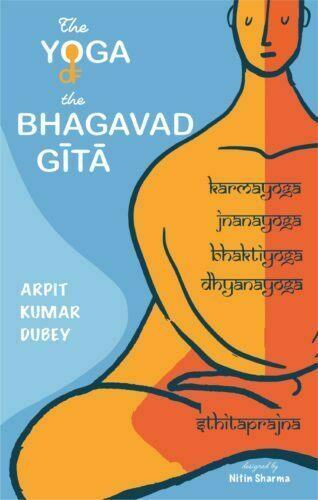
It vividly and graphically presents the key concepts of the Bhagavadgita while majorly discussing the concepts like atman, Paramatman, jagat, karma-yoga, jnana-yoga, bhakti-yoga, dhyana-yoga, sthitaprajna, sadhakas’ challenges and the ways out.
This volume covers all the aspects of Yoga and self-management discussed in the Bhagavadgita –– a comprehensive text of personal and professional life management and adhyatma-sadhana (spiritual upgradation). What makes the book special is its dialogue format between a guru and his disciple as exactly what we witness in the Bhagavadgita as between Sri Krsna and Arjuna.
It vividly and graphically presents the key concepts of the Bhagavadgita while majorly discussing the concepts like karma-yoga, jnana-yoga, bhakti-yoga, dhyana-yoga, sthitaprajna, and seven keys of self upgradation, which leads towards Health, Happiness and Harmony, challenges and the ways out.
This book will help in the making broader understanding of the concepts and philosophy of the Bhagavadgita, which transcends time and space, to register with the new generation readers and thereby emulate and practise the varied forms of Yoga.
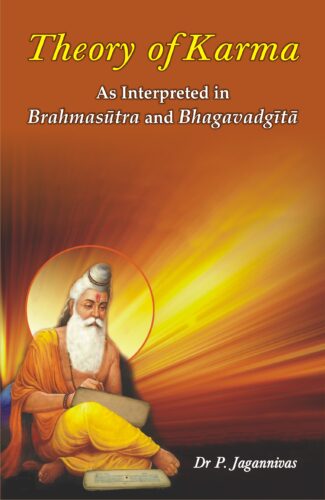
This book, which highlights and engages one to the theory of karma that is in vogue from the Vedic times and reinforced by the Brahmasūtra and the Bhagavadgītā, talks about one’s karma-phala and supplies enough material on karma-adhikāratva, jīva-kartr̥tva and the divine intervention.
Creation is a process, where the potential insentient matter (prakr̥ti) gets manifested into the gross form, to embody during the sr̥ṣṭi, each of the sentient entities called the ātmas with the suitable body either of deva, manuṣya, jaṅgama or of sthāvara. This glorious activity is orchestrated by the one and only Omnipresent, Omnipotent and Omniscient Reality called Brahman. But one question remains still an enigma, as to why a particular sentient entity gets a specified body and through whose direction that decision arrives? The ancient Vedāntic knowledge reinforced by the Brahmasūtra and the Bhagavadgītā establishes that it is, purely and solidly, the result (karma-phala) of earlier actions (karmas) of each one of the sentient entities. This is a strong and formidable solution to the unanswered questions like why does, one child being blessed to be born in either rich or healthy and sāttvic family and another child being consigned to be born in a family living in poor conditions or unhealthy tāmasic environment.
This book would engage the readers to think on those lines by supplying enough material on karma-adhikāratva, jīva-kartr̥tva and Divine intervention.

The monograph consists of two parts, the first examines Buddhist devo-tional practices, in Theravada tradition and their objective and benefits. Part two elucidates the rise and growth of Buddhist devotionalism in Ceylon, Burma and Thailand, keeping view in the specific demonstrative aspects of their faith in contemporary Buddhist religious life.
The monograph consists of two parts, of which the first examines the Buddhist devotional practices, from the historical and canonical perspectives of the evolution of the worship of caitya, stupa, relics, symbols and images. It provides a multi-dimensional account of caitya, thupa, relic, symbol and image worship in Theravada Buddhist tradition, in the Sinhalese Vamsa literature and as depicted in the records of the prominent Chinese travellers to India. It throws light on the Buddhist stupa, the Buddhas relics viz, hair, nail, tooth and ashes; the symbols which pre-ceded the Buddha image viz., the bodhi-tree, wheel, bowl, staff, robe, crest, turban, shadow and the Buddhas foot-prints as the objects of devotion and worship and the objectives and benefits of such devotional acts. Part two elucidates the rise and growth of Buddhist devotionalism in Sri Lanka with special reference to its ceremonies, rituals, pilgrimages as depicted in the devotional literature of Ceylon. Further, it provides an account of devotional Buddhism in Burma by tracing its antiquity; describes Buddhas relics, images and pagodas as the objects of veneration. Similarly, it makes a brief survey of Thai Buddhist devotionalism with special reference to Wats, Thai offerings and prayers to Buddha images and their objectives. The work illuminates the historical and canonical significance of precept and practice of different aspects of Buddhist devotion and how they are demonstrated in the contemporary Buddhist religious life of Ceylon, Burma and Thailand.
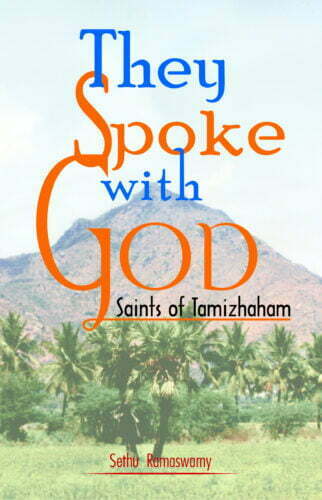
This book, which will interest general readers and scholars, and particularly addressed to young readers, highlights the lives and times of some of the saints of Tamil land who have been the votaries of peace, universal brotherhood and spirituality.
The lives and teachings of saints have a special place in Indian tradition. Saints have been the votaries of peace, universal brotherhood and spirituality and were, and are, among the most loved and revered personages in Indian history and culture. This volume comes as a tribute to the prominent saints of Tamizhaham or Tamil land, who have contributed immensely to Indian culture and society.
It highlights the lives and times of some of the noted exponents of the Shaivite path of devotion. It begins with discussions on some of the famous Nayanar saints like Somasimarar Nayanar and Karaikkal Ammaiyar, and takes up the contributions of medieval bhakti saints like Sridhara Venkateswara Ayyaval and Avudai Akkal. The concluding section deals with the ecstatic saints of the region of the late nineteenth and twentieth centuries. This part contains an account of a woman saint of our own times, Andavan Pichchai Amma, as well. The lives of the saints are told in a simple language that wonderfully unravels their complex messages. The work shows that though the saints had diverse experiences and expressed their spirituality in different ways, the lives of all these saints have an ecstatic and a celebratory quality about them.
The volume will interest general readers as well as scholars. It is particularly addressed to young readers in an effort to introduce them to Indian spiritual and cultural legacy.
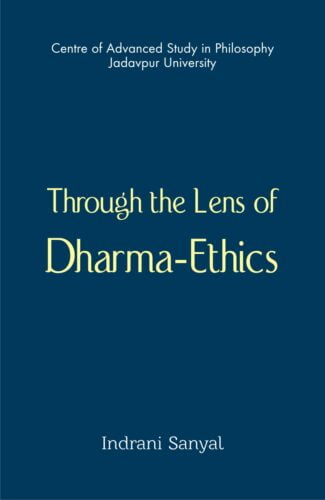
This volume primarily concerns itself with the elaboration and analysis of the Vaidika ethics as one of the exemplars of DharmaEthics, to answer the basic question as to why should one be moral. A sustained analysis has been carried out to explain the sense of transcendence of the empirically existent, in terms of abhyudaya, mukti for which this DharmaEthics is a supportive ladder.
Notwithstanding the profound and vast dimension of the concept of Dharma as such, Through the Lens of Dharma-Ethics, the author has endeavoured to put forward some of the metaphysical affirmations on which the feasibility of Dharma-Ethics as a discipline reposes. This volume primarily concerns itself with the elaboration and analysis of the Vaidika ethics as one of the exemplars of Dharma-Ethics, to answer the basic question as to why should one be moral.
An attempt has been made in this volume to rearrange and reformulate the answer by discussing the concepts of Dharma and its allied concepts, different kinds of karmas prescribed for the individuals, the fourfold scheme of purushartha, psychology of human volition, roles of different psychological traits, nature of motivational force conveyed through the imperative statements and many other relevant issues.
A sustained analysis has been carried out to explain the sense of transcendence of the empirically existent, in terms of abhyudaya, mukti for which this Dharma-Ethics is a supportive ladder. If there is hope for man, why should there not be hope for mankind? possibility of this sort has also been addressed. The human-centric Dharma-Ethics has been deciphered as a description and also as a prescription for the embodied humans with their various sort of indebtedness, about how they live and how they ought to live in the truth of Dharma.
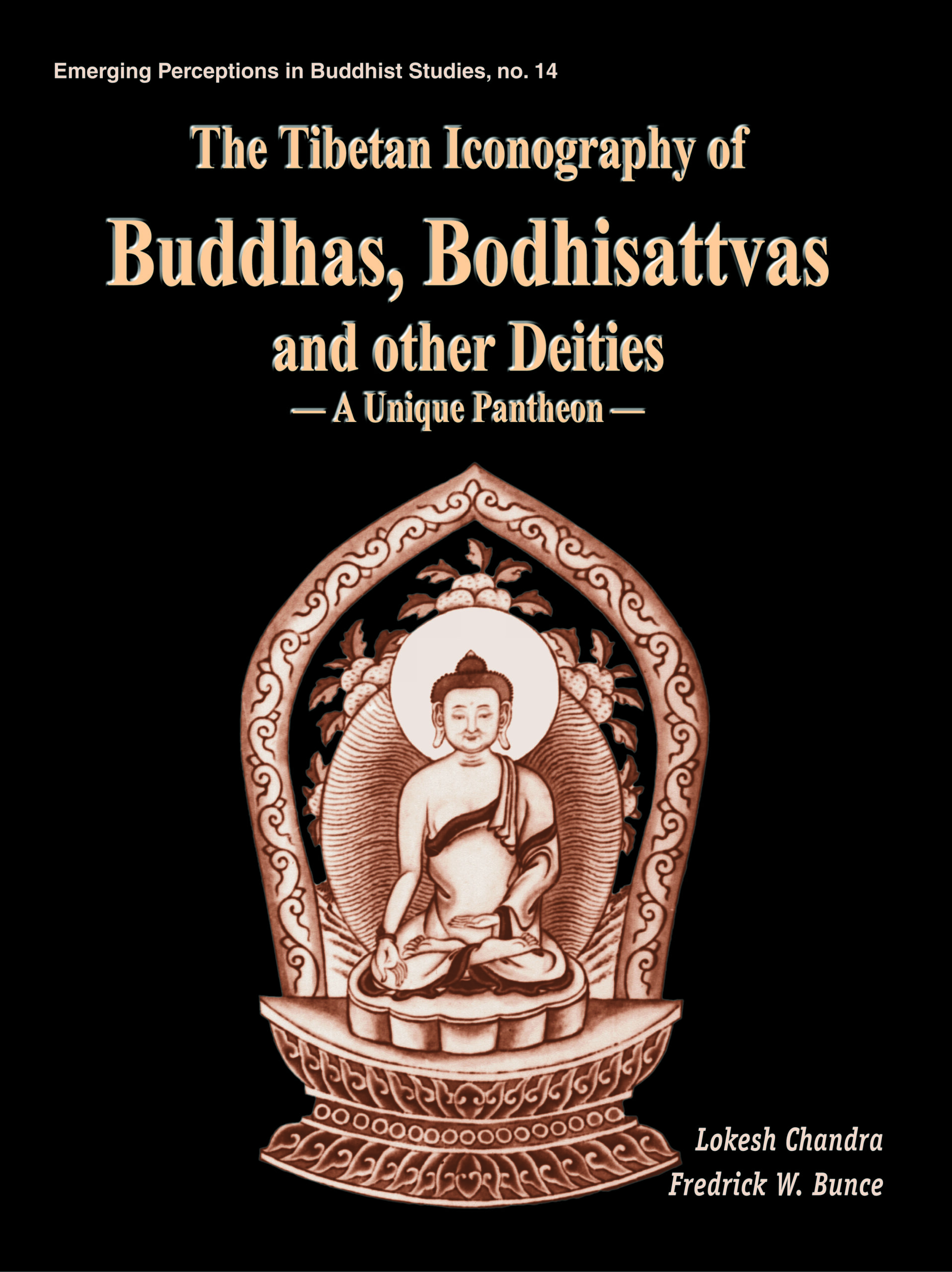
The book studies the 360 icons of the Chu Fo Pu-sa Sheng Hsiang Tsan pantheon referring to a rare set of woodcuts distinct among Buddhist pantheons. It analyses the unique features of this pantheon, pointing out the significance of each figure in the mythological/theological framework and minutely describing the iconography of the images.
Beginning with a few aniconic symbols, like footprints, the Bo tree or stupas, in the pre-christian Indian art, Buddhism, over the centuries, came to evolve a be-wildering array of deities in ever-increasing number of pantheons. Interestingly, in Buddhism today, there are perhaps as many pantheons as there are countries, or internal regions or sects within them. Chou Fo Pu-sa sheng Hsiang Tsan, in focus here, is one of these many Buddhist pantheons and acknowledgedly the culmination of Lamaist art. Authored by Rol. pahi.rdo.rje, alias Lalitavajra, (1717-1786): an imperial preceptor of Emperor Chien-lung (1736-1795), it is a rare set of 360 wood-cuts/xylographs, representing varying forms and manifestations of the Buddhas, Bodhisattvas, tantric and tutelary deities, arhats, sages, teachers, dharmapalas and protective divinities. It is also accompanied by 360 `eulogies’ in Chinese. Two internationally distinguished scholars here team up to present afresh the Chou Fo pu-sa Sheng Hsiang Tsan, aptly called a unique pantheon. Drawing together all the 360 wood-cut images in their vividly enlarged/enhanced versions without compromising their aesthetic integrity, the book not only captures their subtle iconic devices, but spells out as well, in meticulous detail, all their iconic attributes, like body postures, faces, arms/hands, mudras, asanas, vahanas, companions, and whether clam or wrathful. The book also incorporates the names of each deity/deity-form in Sanskrit, Manchu, Mongolian, Tibetan, and Chinese. Unveiling, for the first time, the images of a veritably unique pantheon, in their enlarged format, and their accompanying Chinese eulogies, the book is bound to fascinate anyone concerned with Buddhist art and iconography.

The volume studies comprehensively the theory and practice of Tibetan Buddhism: its historical, religious and cultural evolution, its various deities and their symbolism, its basic philosophy and sadhana and the intricacies of the religious experience it involves. It has numerous illustrations and references to original works.
Tibetan Buddhism has held a place of its own in the Buddhist tradition, having preserved and evolved the religious culture of the Vajrayana, the final phase of Buddhism in India. Within that, the Tibetan Tantric belief has a unique significance and it has made a memorable contribution to the literature on Tibetan Buddhism. This authoritative work deals with the theory and practice of Tibetan Buddhism in a comprehensive manner. It presents a study of Tibetan Tantricism beginning with an account of the historical, religious and cultural evolution of Tibetan Buddhism and delving into the intricacies of practice of the religion. Dr. Krishna Ghosh discusses the many deities of the tradition as representing a wide range of religious experience from the primitive to the sublime. She lays bare the complex vision of Tibetan Tantric Buddhist philosophy and sadhana, clearing it of the obscurantism associated with the belief system for long. The work abounds in illustrations line drawings and photographs and has numerous references to original works by Tibetan and other scholars. The book is written in an easy-accessible style to allow a broad range of readers to familiarise themselves with Tibetan Tantric Buddhism. Its penetrating insights into the subject would make it an invaluable work for scholars and practitioners of the tradition.
| Tirumurai is the sacred poetry in the Saiva tradition of ancient Tamilnadu. Sung to the rhythm of percussion, string and reed instruments, the devotional outpouring of saints and poets known as Nayanars of the fifth to the twelfth century CE reflect the religious and cultural mores of the people. This book attempts to capture the grandeur of this vast, fascinating subject by presenting a detailed overview of the salient features. Beginning with an introduction to Nataraja Tattvam and Tamil Isai, all twelve Tirumurai are explained. Each chapter begins with the life story of the Nayanar followed by an analysis of the poetry with explanation of paN (raga) and sthala puranam. A few select songs from each Tirumurai are presented in the original Tamil with Romanized transliteration as well as English translation, made available in an online audio album complementing this book. Foreword by Lakshmi Viswanathan |
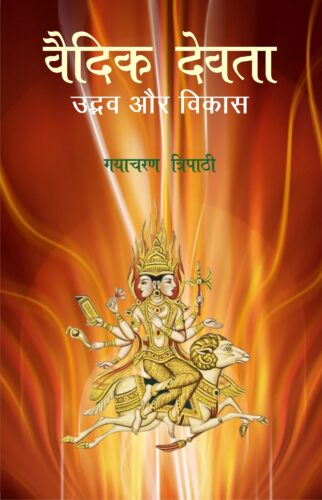
Present book presents interesting and authentic details of almost all promient Vedic gods, about their conceptions, their most ancient forms, their orderly evolution, and about their evolved personalities.
There have been quite a few attempts to delineate the nature and character of Vedic Deities on the basis of Vedic Samhitas by European scholars like Macdonell, Hillebrandt, Oldenberg, Luders and, of late, by Oberlies, etc. However, none of these scholars has made attempt to trace the subsequent development of their character and personalities through the later Vedic texts, epics and the Puranas, etc., whereas it goes without saying that the concept of Hindu gods today in the minds of the people is exactly the one which we encounter in the Puranas and in the folk literature.
This obviously means that the personalities of the Vedic Deities did not freeze with the end of Vedic literature but continued to develop in later period as well through the subsequent literarary activities. Taking rather vague clues from the Vedic texts, the authors or narrators of the Puràõas, augmented and supported by folk beliefs, further expanded, modified and developed the personalities of these gods so that, for the most part, the intangible character of these gods acquired a concrete shape and form, a body of flesh and blood, so to say.
The book tries to trace the historical development of the personalities of Vedic Deities through the subsequent Vedic literature, as well as the epics and the Puranas till they acquire the shape and form in which they are conceived and venerated today.
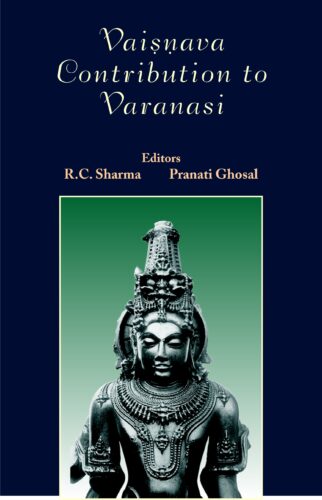
Varanasi, the abode of Lord Shiva has also embraced other sects including Vaisnavism. If Shiva is Nataraja or Natesha, Krishna is known as Natavara dancing with gopis. There are traditions which reveal that Kashi was once a Vaishnava stronghold. The book projects the Vaishnava contribution to Varanasi in literature, sculptural and other artistic renderings, visual and performing arts, temples, festivals and ceremonies.
Varanasi, the abode of Lord Shiva has also embraced other sects including Vaisnavism. If Shiva is Nataraja or Natesha, Krishna is known as Natavara dancing with gopis. There are traditions which reveal that Kashi was once a Vaishnava stronghold. In the medieval period many Vaishnava saints from different quarters thronged to Varanasi to preach and popularise their faith. The book projects the Vaishnava contribution to Varanasi in literature, sculptural and other artistic renderings, visual and performing arts, temples, festivals and ceremonies.
| There are no products |